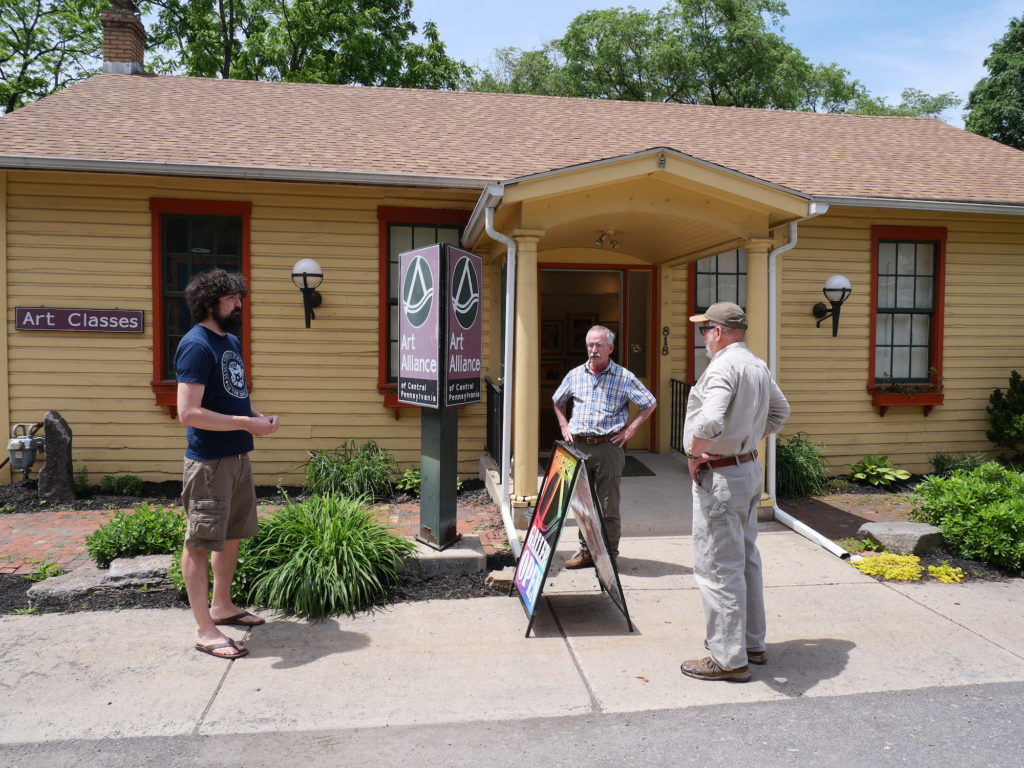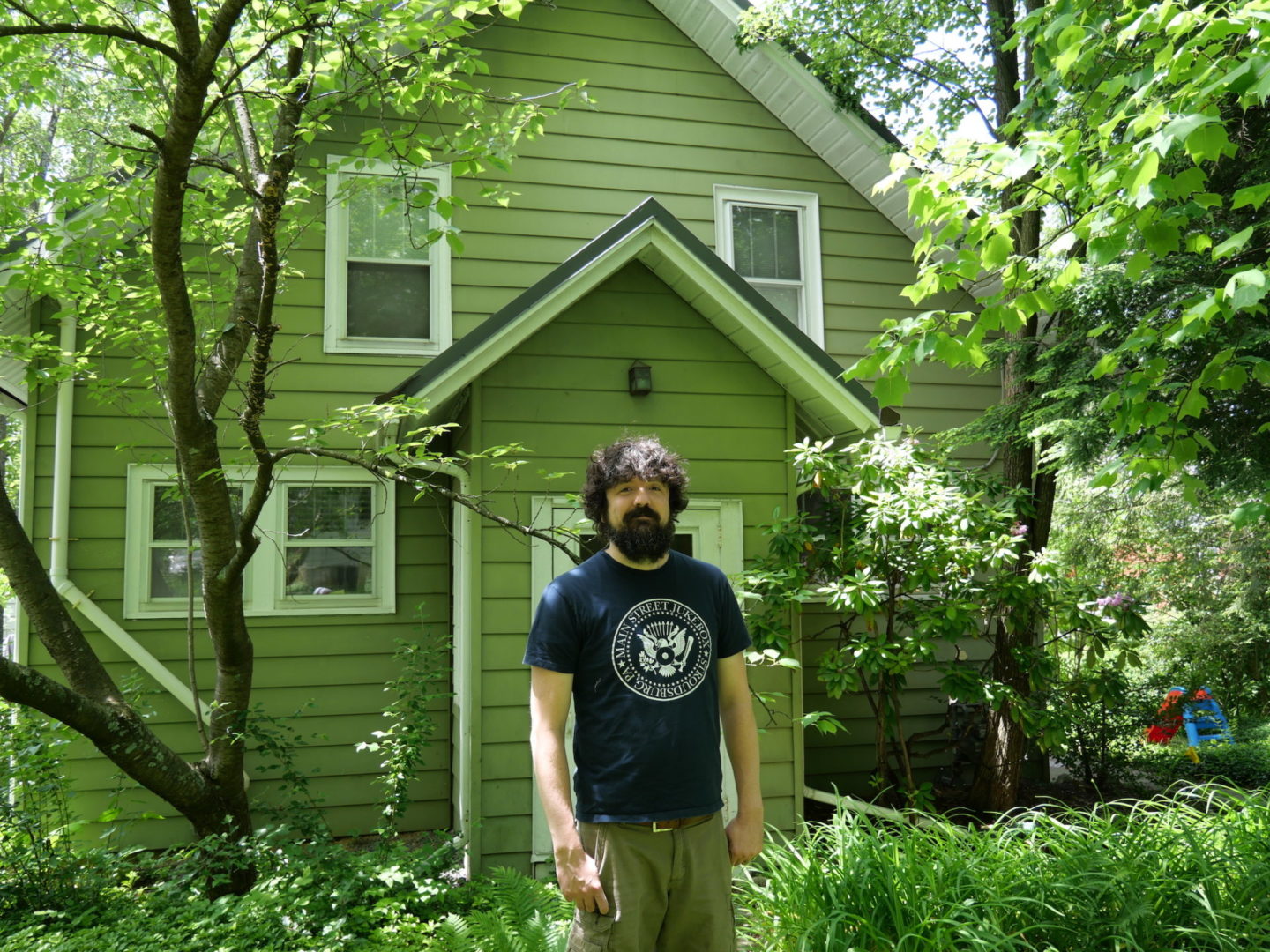The Village of Lemont has distinguished itself in historic and cultural character over the years. It has been shaped not only by its geographical location, but by creative and caring Lemonters. The village would certainly not be what it is today without, well, the village.
Lemont (le mont, French for “the mountain”) is located in the ageless shadow of Mt. Nittany. Nittany is derived from an Algonquin word that translates to “single mountain.” Many readers have surely started from the trailhead at Lemont to ascend the mountain and then take in the beautiful views.
This area was formerly known as the “End of the Mountain.” With Lemont situated at the southwest edge of Mt. Nittany, you can imagine the long carriage rides along Brush Valley that prompted 19th-century travelers to pine for the next stop at the “End of the Mountain.” Stagecoaches from Bellefonte would also go through the toll gate on Pike Street, maybe on their way to Boalsburg or back to the Farmers’ High School (Penn State).
Lemont has always been an inter-valley junction point. However, it’s the people who have created and preserved its history.
I wanted to have a better understanding of this charming anomaly, so I reached out for local help. In a small village where people seem to know everyone, I was connected quickly with a few household names in Lemont. Jonathan McVerry was kind enough to take me on a little walking tour through the village. Afterwards, I had a wonderful conversation with neighbors Sue and Ron Smith, who generously shed light on all things Lemont.
My tour started at Jonathan’s house on Dale Street, which was once the “lower” schoolhouse. As we approached the village green, I asked him if he’d played any concerts there. He just smiled and said “yes” in an understated kind of way. He continued to educate me on local history as we walked the historic district.
Jonathan described Lemont as a major crossroads in its prime. Before roads were rerouted, they not only brought people in from Penns Valley, but travelers also had to pass through Lemont to get to State College. Pike Street was a main street until sometime after the 1920s. Ron mentioned that this route change led to decades of decline between the 1930s and 1970s before the village began to recover.
When Jonathan and I arrived at the grain elevator and coal sheds, he shared how an Eagle Scout, Joel Blanco, at age 14, led a group of volunteers in cleaning them out. The Lemont Village Association (LVA) raised $55,000 to purchase the granary in 1994. It was built by Moses Thompson in 1885. Thompson was the last ironmaster at Centre Furnace, was one of the largest landowners in Centre County, and helped found the Farmers’ High School. He laid out the Village of Lemont circa 1870.
The grain elevator and coal sheds operated hand in hand with the Bellefonte, Nittany & Lemont Railroad. Coal was brought in by train, and grains from local farms steamed out. Ron explained that the grain elevator used a steam engine to lift the grain to the five grain bins, which could hold up to 6,000 bushels.
As we walked, Jonathan and I both seemed to zero in on the Art Alliance of Central Pennsylvania. Not only was the Art Alliance building the Lemont Band Hall until about 1960, but this structure, built circa World War I, was moved from Penn State’s campus at the rear of Old Main, where it had originally served as the YMCA building.

Next to the Art Alliance, the Gallery Shop building served as Lemont’s post office when a controversy arose regarding removing it from Lemont altogether. Sue emphasized that this is when the LVA was formed by “concerned citizens of Lemont” in 1978. According to LemontVillage.org, “Initially, the LVA was formed to spearhead a drive to help keep the post office from being moved from Lemont. The effort was successful and a new community spirit was born.” A year later, Lemont was added to the National Register of Historic Places.
Lemont is a crossroads of history and culture. It’s a place where folks choose to get their mail by faithfully delivering themselves to the post office. This social act has established the post office as more of a community center, and locals have fought to keep it that way. Whether it’s the post office, the granary, the village green, or the current Pike Street Traffic Calming and Pedestrian Access Improvement Project, the people of Lemont have a good sense of direction for lasting preservation and community.
Shops on Pike Street are still open during construction. Learn more about Lemont at LemontVillage.org. T&G
Local Historia is a passion for local history, community, and preservation. Its mission is to connect you with local history through engaging content and walking tours. Local Historia is owned by public historians Matt Maris and Dustin Elder, who co-author this column. For more, visit localhistoria.com.
Sources:
“Historic Lemont.” Lemont Village Association. Accessed June 10, 2022. https://www.lemontvillage.org/historic-lemont
Linn, John B. History of Centre, and Clinton Counties. Philadelphia: Louis H. Everts, 1883.
McVerry, Jonathan. “Lemont.” Centre County Encyclopedia of History & Culture. Centre County Historical Society. June 7, 2022. https://centrehistory.org/article/lemont/
Stout, Lee. “Moses Thompson.” Centre County Encyclopedia of History & Culture. Centre County Historical Society. June 7, 2022. https://centrehistory.org/article/moses-thompson/
Special thanks to Sue and Ron Smith




